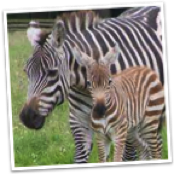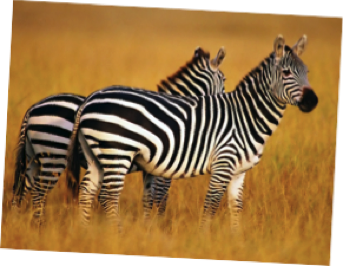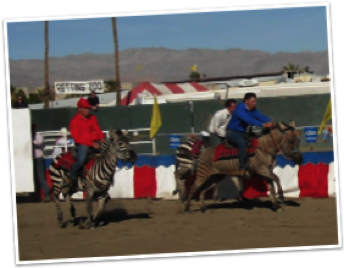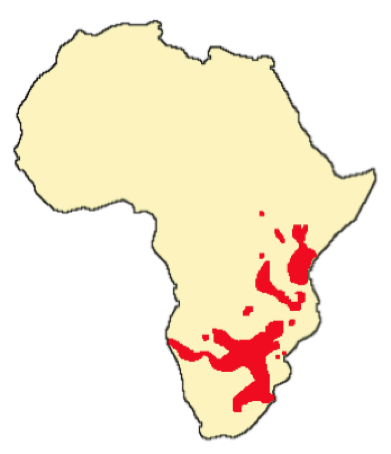
Name: Zebra (Plains)
Scientific: Equus quagga burchelli
Family: Equidae
Relatives: Horse, Donkey
Environment: Plains, Savannah
Origin: Africa
Life-span: 25 years
Size: 750 lbs
About Me
Zebras are an equine most recognizable by their stripes. There are three main types of zebras, each with different pattern and color variations. Plains zebras are the most common type, within which there are many subspecies. Plains zebras are identifiable by their thick stripes, short ears, and small head. The second type, Grevy’s zebras, are larger than the Plains zebra. They look similar to a mule, with large heads and large, rounded ears. The Grevy’s are the largest species of zebras, and there are no subspecies known. Their stripes are more numerous and narrower than the Plain’s zebra. The third type is Mountain zebras, which have two subspecies. They are the smallest of the three types, and are an endangered species. The Mountain zebra looks similar to the Plains zebra, but they have a large dewlap (hanging skin) on their throat. There is no certainty regarding why zebras have stripes, but it is thought that it may be for camouflage when zebras are together.
Zebras are highly social animals. They tend to live in small herds with a single male, several females, and the young. Small herds will often gather together into large groups totaling thousands near drinking water or in the open plains to graze. However, even when these large groups are formed, the individual family units remain close to each other. Within 20 minutes of birth, foals are able to stand, and may be able to run within an hour. Mother zebras must stay with the herd to find food and water. So as to not be left behind, the foals quickly become fast on their feet and can keep up with the herd. When baby Plains zebras are born, they have longer, soft, and fluffy hair. They are brown and white for at least the first year of their life. At about one year old, they will shed their baby coat and grow in a coarse back and white coat.








Fast Facts

Snapshot
1. There are 3 main types of zebras: Plains, Mountain, and Grevy’s.
2. The different stripe patterns distinguish the species of zebras.
3. Zebras have been trained to ride or pull carts.
Zebras live primarily in the African Savanna, which covers nearly 5 million square miles. It is home to around 2 million herbivorous mammals, hundreds of species of birds, and a wide variety of plants, trees, and grasses.
In the wet season, the Savanna may receive up to 25 inches of rain each month. However, for the 7 month long dry season, only about 4 inches of rain falls each month. Most species of zebras do not have a specific territory. To survive in the Savanna, zebras exist as nomadic herbivores, continually on the move grazing for green grass and fresh water sources.
Zebras are black with black and white stripes. They have black skin and black and white hair that grows in patterns.




Africa
Uses
Many African tribes have utilized zebras for thousands of years, using their meat as a source of protein and their hides to make leather items. Zebras are found in the cultural tales of many African tribes. Even today, zebra hides are very popular for clothing, home decorating and furnishings. Zebra hides are often made into belts, rugs, couches, chairs, decorative pillows, ottomans, and more.
Zebras have been trained or used as draft animals to pull carriages because of their resistance to diseases that affect horses. They captured popular attention in the early 1900s when Lord Walter Rothschild used a hitch of 4 zebras to pull his carriage to Buckingham Palace. Others have successfully used zebras to ride in both Africa and New Zealand. However, zebras are more prone to panic than other equines due to their heightened sense of flight for survival. This makes them more difficult to train, and less desirable as draft animals. Today, trained zebras still capture people's imagination when they are used in circus acts, and raced for exhibition exclusively by Hedrick’s Promotions, Inc.


